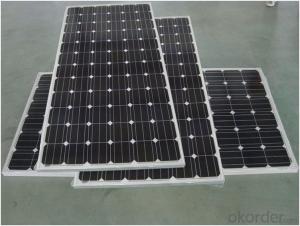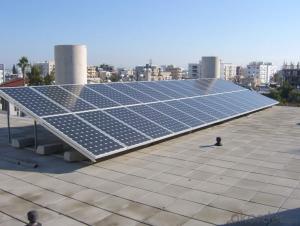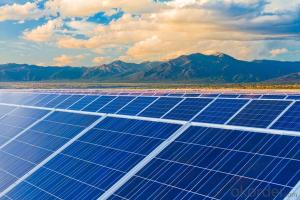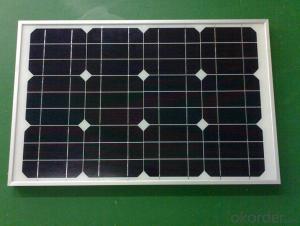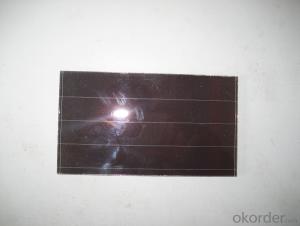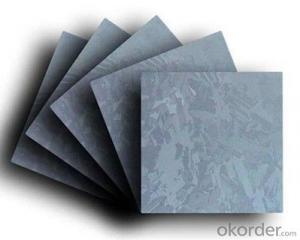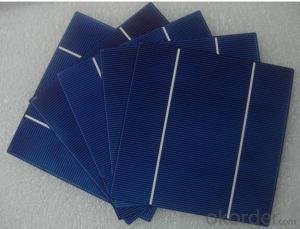Solar Panel System for Home Lighing Solar Panel Kit 10w to 500w
- Loading Port:
- China main port
- Payment Terms:
- TT OR LC
- Min Order Qty:
- 500 watt
- Supply Capability:
- 20000000 watt/month
OKorder Service Pledge
OKorder Financial Service
You Might Also Like
Destription:
Solar panel refers to a panel designed to absorb the sun's rays as a source of energy for generating electricity or heating. A PV module is a packaged, connected assembly of typically 6×10 solar cells. Solar PV panels constitute the solar array of a photovoltaic system that generates and supplies solar electricity in commercial and residential applications.
Main Characteristic
1.Manufactured according to international quality and Environment Management
System (ISO9001, ISO14001)
2. By the high transmittance, low iron tempered glass, anti-aging of the EVA(polyethylene - vinyl acetate), high-performance crystalline silicon solar cells, good Weather resistance TPT (fluoroplastics composite membrane) by pyramid , has a good Weather resistance and anti-UV, hail, water-proof capacity.
3. OEM and customerized package are accepted
4. High efficiency crystalline silicon solar cells
Quality warranty
1.10 years limited warranty on material and workmanship
2. more than 90% power output in 10 years
3. more than 80% power output in 25 years
Product show


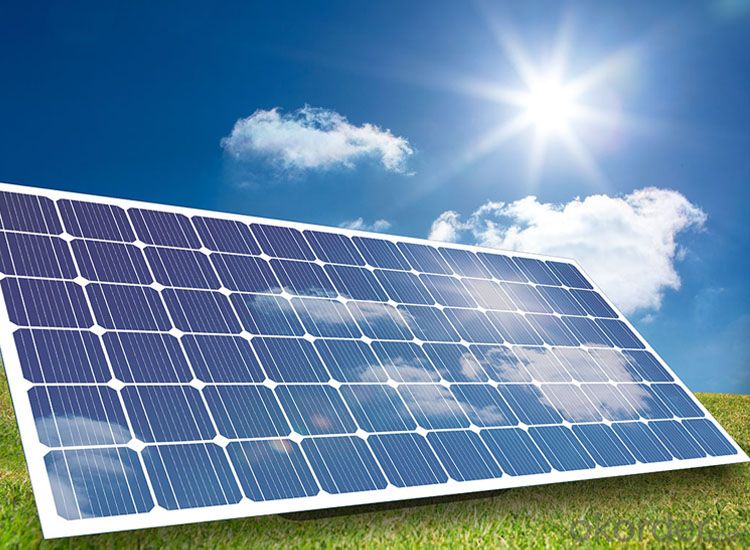


- Q:What is the expected efficiency improvement for multi-junction solar silicon wafers?
- The expected efficiency improvement for multi-junction solar silicon wafers is typically around 30-40%.
- Q:Can solar silicon wafers be integrated into building materials?
- Yes, solar silicon wafers can be integrated into building materials. They can be incorporated into various building elements such as roofing tiles, windows, and facades, allowing for the generation of renewable energy while also serving as functional components of the building.
- Q:How is the purity of a solar silicon wafer measured?
- The purity of a solar silicon wafer is typically measured through a variety of analytical techniques, including resistivity measurement, impurity analysis, and spectroscopic methods. These methods help determine the concentration of impurities such as metals, dopants, and non-metallic elements in the silicon material. The lower the concentration of impurities, the higher the purity of the wafer.
- Q:What are the current trends in solar silicon wafer technology?
- Some of the current trends in solar silicon wafer technology include the shift towards thinner wafers, such as the adoption of 180-200 micrometer thickness, which reduces material costs and improves efficiency. Another trend is the development of larger wafer sizes, with the industry moving from 156 mm to 182 mm and even 210 mm sizes, enabling higher power output and reducing installation costs. Additionally, there is a focus on improving the overall quality and uniformity of wafers to optimize solar cell performance.
- Q:How are solar silicon wafers protected from extreme temperatures?
- Solar silicon wafers are protected from extreme temperatures through the use of various techniques such as thermal annealing, passivation layers, and encapsulation with protective materials. These measures help to ensure that the wafers can withstand and operate efficiently under both high and low temperature conditions.
- Q:Can solar silicon wafers be used in wearable fashion accessories?
- Yes, solar silicon wafers can be used in wearable fashion accessories. The small size and flexibility of these wafers make them suitable for integrating into accessories like smartwatches, bracelets, or even clothing items. By harnessing solar energy, these accessories can power various functionalities, such as charging small electronic devices or monitoring health metrics. Additionally, the use of solar silicon wafers aligns with the growing trend of sustainable fashion, making them an attractive option for eco-conscious consumers.
- Q:What is the role of passivation on solar silicon wafers?
- The role of passivation on solar silicon wafers is to minimize surface recombination and increase the efficiency of the solar cell. Passivation helps to reduce defects and traps on the surface of the wafer, allowing for better charge carrier separation and collection, which ultimately leads to improved performance of the solar cell.
- Q:How to extract silicon from silicon wafers
- Chamfer: the annealed silicon wafer is trimmed into an arc shape, which can prevent the wafer edge from cracking and lattice defect, and increase the flatness of the epitaxial layer and the photoresist layer. In this process, the silica fume is produced by water leaching to produce waste water and silicon slag. [1]
- Q:How are solar silicon wafers protected from hailstorms?
- Solar silicon wafers are typically protected from hailstorms through the use of tempered glass covers or encapsulation materials, which provide a strong barrier against hailstones. Additionally, solar panels are designed and tested to withstand various weather conditions, including hailstorms, ensuring the durability and longevity of the solar cells.
- Q:How is the power output of a solar silicon wafer measured?
- The power output of a solar silicon wafer is typically measured by using a solar simulator, which is a device that mimics the sunlight and generates similar light spectra and intensities. The wafer is placed inside a testing chamber, and the solar simulator illuminates it with various intensities of light. The electrical current and voltage generated by the wafer under different light conditions are then measured using specialized equipment, such as a current-voltage (IV) curve tracer. The power output is calculated by multiplying the measured current and voltage values.
1. Manufacturer Overview |
|
|---|---|
| Location | |
| Year Established | |
| Annual Output Value | |
| Main Markets | |
| Company Certifications | |
2. Manufacturer Certificates |
|
|---|---|
| a) Certification Name | |
| Range | |
| Reference | |
| Validity Period | |
3. Manufacturer Capability |
|
|---|---|
| a)Trade Capacity | |
| Nearest Port | |
| Export Percentage | |
| No.of Employees in Trade Department | |
| Language Spoken: | |
| b)Factory Information | |
| Factory Size: | |
| No. of Production Lines | |
| Contract Manufacturing | |
| Product Price Range | |
Send your message to us
Solar Panel System for Home Lighing Solar Panel Kit 10w to 500w
- Loading Port:
- China main port
- Payment Terms:
- TT OR LC
- Min Order Qty:
- 500 watt
- Supply Capability:
- 20000000 watt/month
OKorder Service Pledge
OKorder Financial Service
Similar products
New products
Hot products
Hot Searches
Related keywords
